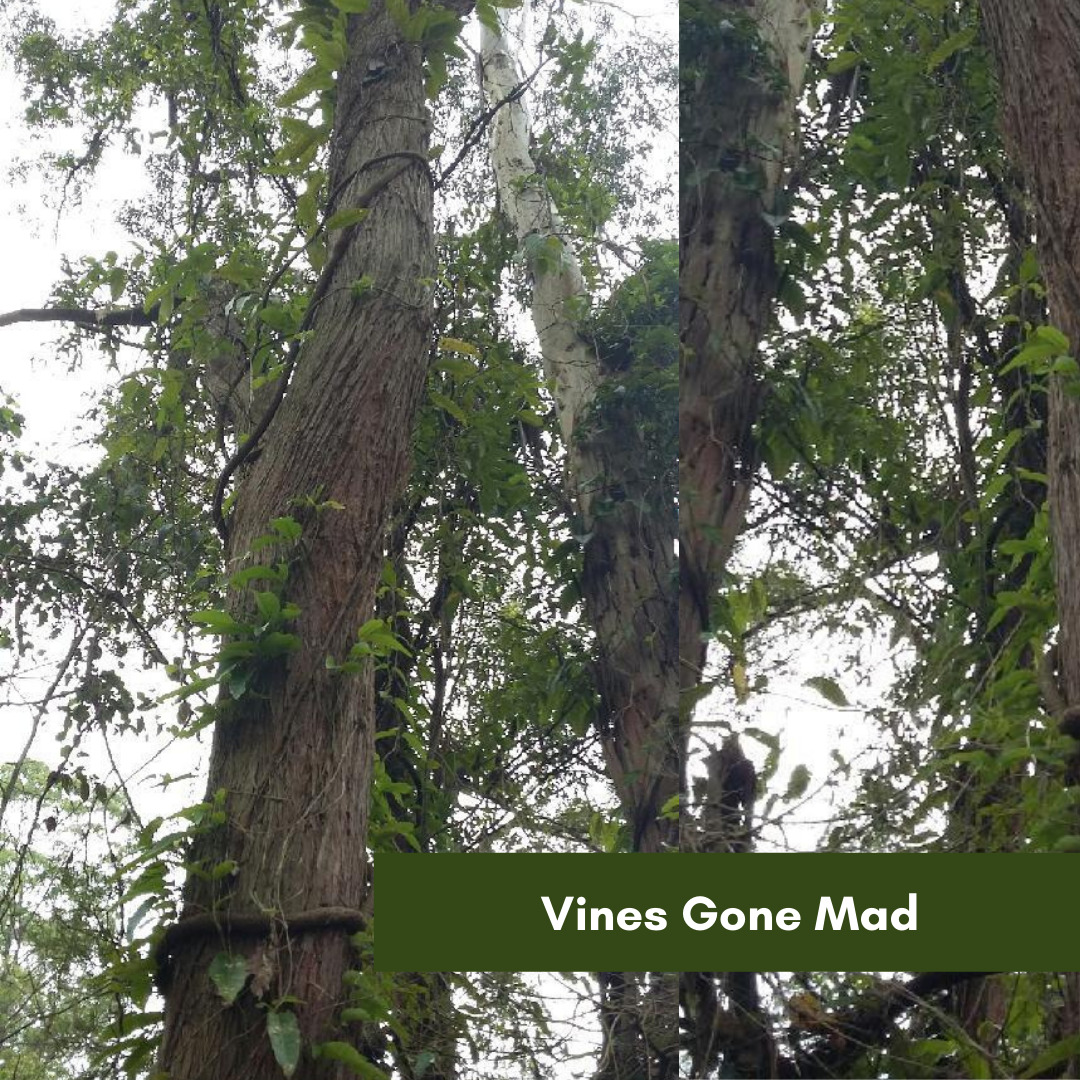Do you have a native vine gone mad with the La Niña conditions we are experiencing?
Native vines are an important part of our natural forests.
Photos by Dennis Mayo
A tangle of native vines can provide food, shelter and nesting sites for many different species of insects, birds, and mammals. Ringtail possums often build their dreys (nest of leaves) amongst the native vines. Just make sure you can identify the vine and determine if it is indeed a native. A good look-a-like guide for native and weedy vines can be found here. If that doesn’t help, just “ask a plant nerd’.
Vigorous vines need large host trees on which to climb and may form a substantial part of a forest canopy. It is natural for a number of trees in a woodland or forest to be overcome by climbers. Others may be restricted to trunks and branches of host trees. Some light climbers act as groundcovers or shrubs in open areas and climb lightly in woodlands and open forests.
In a balanced ecosystem, native vines fill their niche and we do not need to intervene. Vines are kept in check by fauna and in some cases, fire. Now, what about inevitable exceptions to the rule?
There are instances when a vegetation community becomes so out of balance that even a native plant can act like an environmental weed, displacing other native plants. Vines can become unnaturally dominant in forests where fire regimes have been interrupted or other factors have tipped the scales. In a native revegetation area (or Landcare site) where there is little resilience and planting is necessary, control may be required to allow the host plant or sapling to ‘get ahead’ of the vine. This is done by cutting the plant’s stem and allowing it to regrow without use of herbicide.
Implementation of a natural fire regime and integrated weed control in some bushland settings can maintain the correct balance. There is a great example of using an integrated approach using fire undertaken in Redlands, QLD in a Scribbly Gum open forest community. At the IndigiScapes Centre site, Parsonsia straminea became the dominant ground cover and climber to the exclusion of other native species. Now, I need to stress that this is not an undesirable plant and that in other areas doesn’t require control and is in fact used in rehabilitation plantings.
The goal was to reduce the population of monkey rope, restore balance and structure to the vegetation community and, through the use of fire and weed control, provide conditions for the germination of fire-dependent species. Over two years, the site underwent a massive transformation from a Scribbly Gum forest heavily infested with monkey rope to a Scribbly Gum forest displaying the structure of a typical open eucalypt forest with increased diversity of species.
Read more about the trial here (Land-for-Wildlife-Newsletter-October-2009b).

